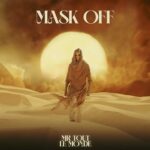Electronic dance music (EDM) has developed and evolved over the years like any other musical genre. From its beginnings in the 1970s New York nightclubs and ‘balearic’ techno to the current global, contemporary explosion of these styles, electronic dance music has changed the popular musical landscape to the point where familiar names are no longer recognizable. What was once cutting edge has been embraced and even redefined by the biggest dance clubs in the world. DJs and producers from all genres are producing high quality, original EDM today.
Back in the disco era, if you wanted to play an original hip-house track with a heavy kick or heavy bass the best place to go was the club down the street. There you would see the heavy hitters of the night, the DJs who played the classics and the best sellers. They would play until the early hours and when the last song ended they would be dancing away on the dance floor or on the barstool. Their sets would feature a wide range of songs from pop to rap, from country to top 40 hits. The sound quality was usually top notch thanks to the quality sound system the clubs used, but you couldn’t really throw a rock and roll party that night.
Around the same time, and this is where things started to change. Disco and the early forms of house music would take a back seat as the youngsters of the day took to the mic in what became known as freestyle. And with the popularity of radio shows like The X Factor, came the rise of reality shows on MTV. Real people became reality stars on air and what was happening behind the scenes was that the artists that were performing became even more famous. Suddenly there was a huge shift in what electronic and hip hop music was. It was now being played at massive parties with DJ’s spinning the tunes and the crowds cheering and dancing.
But then, something happened that would forever change the face of electronic dance music. It was the release of Apple computers with the Mac operating systems. When these first computers hit the market, they were nothing like what they are now. They were extremely slow and lacked the features you would expect from an electronic dance music producer of today. There weren’t even any midi capability yet! So the evolution of electronic dance music began to slow down as the industry scrambled to create better software for the computers.
One of the genres that fell by the wayside during this dark age of the computer were the old school digital drum machines. These were the sound machines of the early 80s that were popular with everyone from house music artists to DJs. They were still in circulation but the new genre that began to take over wasn’t quite the rave that the drum machines were going for. It was techno and it was still weird. But these were the electronic music genres that finally evolved into the genre we know today as trance.
Some years later, techno took its rightful place in the thick and heavy crowd of electronic dance music that dominates the major dance festivals of the world today. People from all over the world would gather in one place for three or four days and party until the wee hours. It was a once a month event where the biggest DJs in the world came together and made magic happen. The sounds of the cymbals, the beats of the bass, the nasty little bass wobbles, the tapping sounds, the scratching and popping sounds – it was ecstasy. It brought the race to a whole new level and people had never looked back since.
Nowadays the rave culture is just as big in the United States as it is in Europe. Part of the reason for this may be the influence of the Britney Spears and Justin Timberlake and their huge impact on the American electronic dance music scene. These three have been at the forefront of the rave culture and helped to lay the blueprint for what we now know as techno. Justin Timberlake’s “What So Not” has even become a number one single in the United States and has made its way to the top ten in the UK and Australia.
Another important addition to the genre was the release of the rave song “Don’t Worry” by the King of pop, Britney Spears. This song became an instant hit and helped to define the genre in the eyes of many. Another artist who helped define the early growth of the electronic music culture was the rapper, Rakim. He popularized the use of the Emotional release style of electronic music and his singles including “Mystery Show.”


